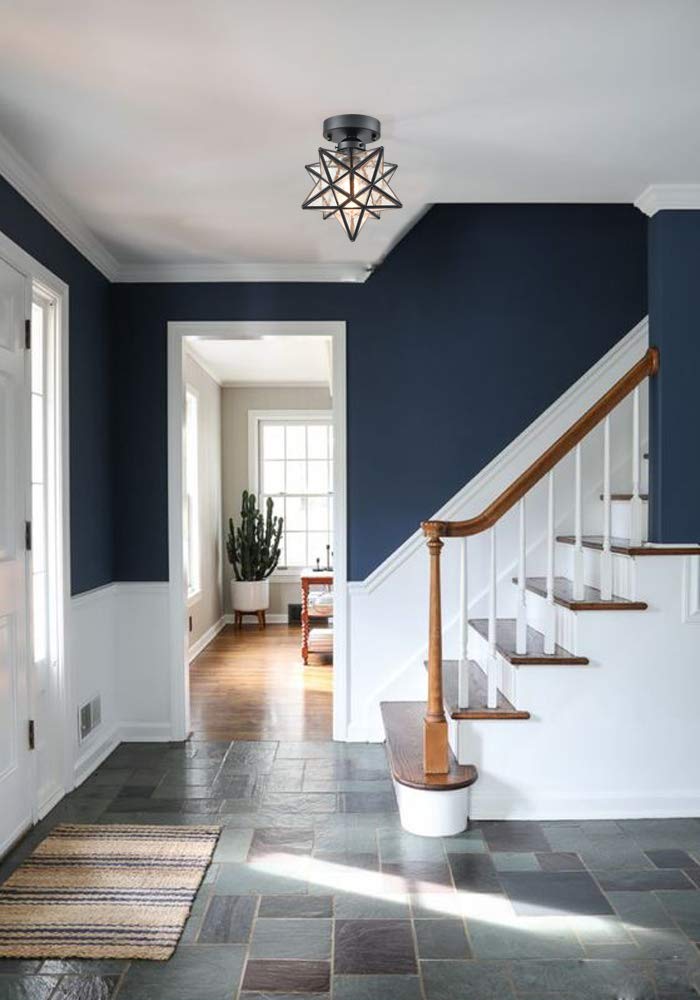Free shpping - Spring Sale use Code: CLHO10, get Extra 10% OFF.
Free shpping - Spring Sale use Code: CLHO10, get Extra 10% OFF.
 0
0

Irrespective of the type and category of fixtures, ceiling lights remain to date the most used of the light categories. Aside from the central nature of its placement that makes its brightness cover every nooks and cranny of the room, it also comes in beautiful designs that provide glamour to the room, reception, offices or anywhere else where it is located. While ceiling lights are one of the most coveted lights today, setting up the ceiling light installation can be challenging.
Challenges of Ceiling Light Installation
Nothing is easier than to pick up a device, plug it into a socket, switch on, and get everywhere lightened. While a plug-in wall light could best set the example for such ease of ceiling light installation, it is unfortunately not an alternative to the use of a ceiling light. Installing a ceiling light simply goes beyond the simple maneuvering of a few electrical tools like Flathead screwdriver, Philips screwdriver, Wrench, Safety glasses, Wire stripper among several others. It also requires a whole lot of professionalism as a result of the following reasons:

1.Wiring the Ceiling
Threading through the ceiling is one of the most tricky aspects of wiring in ceiling light installation. Apart from the risk associated with resting the entire body weight on a group of jointed planks that form the ceiling skeleton with the hope of such being able to withstand the pressure, ceilings are also always with very low ventilation thereby making it unconducive for a long stay. For anyone seeking to lay the wires that will supply light into the respective rooms from the ceiling, entering and laying wires inside the ceiling is an indispensable part of the activities to engage into.
The first time wiring of a house does not require the presence of an electric current. Upon completion of the wiring, connect lamp holders from within the room onto which the light will be mounted. This is where the need for a direct current comes in. Dealing with a direct current can be very traumatic as a result of the risk associated with it. How will a nonprofessional electrician even know what constitutes positive, negative and neutral in an electric wire to make the adequate connection required for a proper result?

3. Wrong Wire Connection Can Be Very Dangerous
Most houses have been razed in a case that better qualifies for arson rather than a fire outbreak. High voltage had often been the cause for most fire outbreaks since time immemorial. However, little is said of the issue of wrong wire connections by unprofessional electricians. Aside from the risk of fire, electrocution is another greater risk that a wrong wire connection can cause. It is for these reasons and many more that a good knowledge of wire connection, as well as the procedures to take in ceiling light installation, becomes very necessary.
How to Install A Ceiling Light
Ceiling light installation can be quite risky. But with the right information, it can be fun. Before any act of installation whatsoever, it is first important to switch or gear off any form of available power. That is the first step towards the precaution that anyone seeking to install a ceiling light should take note of. Once done, then the following process should be carefully considered:

This is the first step towards the ceiling light installation. It involves the removal of the bulb after which the mounting hardware will be attached.
2.Unscrew Base of Light Fixture and Observe Wire Connections
This is the most technical part of a ceiling light installation as well as the most susceptible to wrong connection. This is because all light features usually comprise of the little key wires (which are the positive and negative wires). The ability to identify these requires a bit of electrical understanding and expertise where necessary. With the wrong wire connection, the power will probably not find its way into the light, or in some other ways destroy the light and even cause serious injury.
Most newly bought fixture often comes with new and probably heavier base plates which will be screwed into the electrical box while making sure the wires are still visible and accessible. In a situation where the new fixture weighs heavily more than the old one, it is advisable to install an accessory mounting strap or support rod. Install Either of these next to the junction box for the fixture to properly hide the hardware.
4.Connect Wires to their Appropriate Quarters
Having fixed the electrical box with the base plate, the next thing to do in ceiling light installation is ensure the negative, positive and neutral categories fix where they are duly assigned, and that every wire connection matches with a corresponding connection (i.e. positive to positive, negative to negative, and neutral to neutral). While making the wire connections, you need to twist the wires together and cap them out with a wire cut.
First connect the wires to the light fixture as earlier prescribed. The next action is to properly place the wired light fixture against the ceiling and screw to attach them. This will make the ceiling act as support upon which the light will be mounted.
6.Complete the Ceiling Light Installation and Restore Power
Having fastened the light fixture to the ceiling with the help of a screw, the next thing to do is fix the light and put on the already switched or geared off power to check out the new fixture. It is, however, advisable to use bulbs of the light voltage while testing to prevent overheating and to allow them to last for an extended period.



Thanks for subscribing. Copy your discount code and apply to your order.